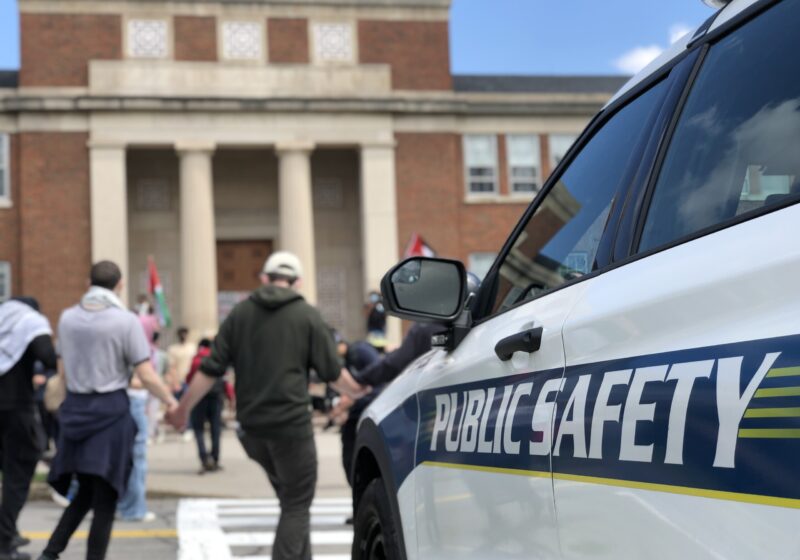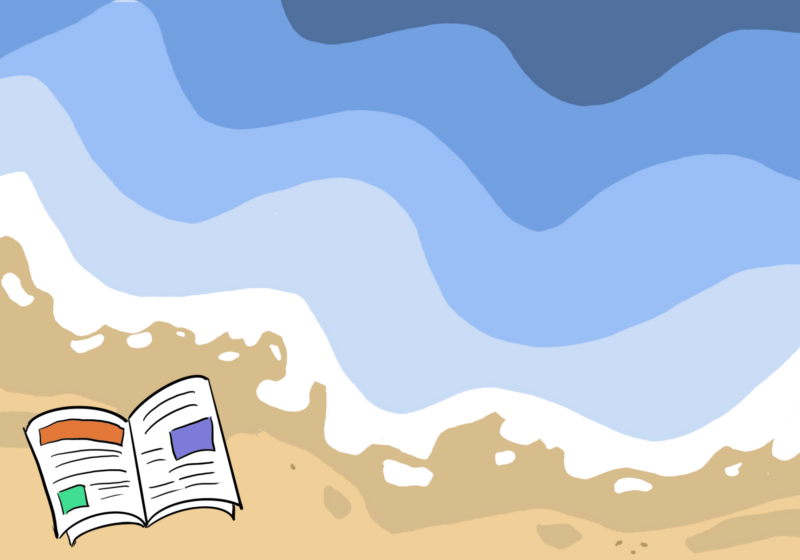The Rochester Contemporary Art Center made the invisible visible on Thursday night with the opening of its newest exhibit, “Vanish.”
“[Artist Aaron Miller is] taking this issue and he’s bringing it home,” Syracuse artist Tanya Smolinksy said. “I think it’s this issue that’s very intimidating to people, they don’t want to look at climate change, they don’t want to look at what fossil fuels are doing to our world, and this is really amazing. He’s taken the concept but he’s made it very intimate.”
“Vanish” showcases work by emerging artists Aaron Miller, Brandon Ballengé, Yvonne Buchannan, Peter Edulund, and Dorene Quinn.
Miller’s largest piece fills the entrance of RoCo, welcoming guests with a disintegrating chair styled like 19th-century wealthy European furnishings that so many Americans coveted for their own homes.
In the past, Miller has built entire rooms with curtains and tables and a variety of chairs, using mixed media with a specific endpoint in mind: coal and tar.
“I have a hard time bringing furniture in,” Miller said at the artist’s talk on Saturday afternoon. “That’s sort of new. I was trained as an artist, printmaker […] I’m just allowing myself a little bit of that combination.”
The use of coal has a personal significance for Miller, just as opening the conversation about its harmful impact on the environment takes a personal toll. Miller’s family has worked with coal for generations.
Miller’s self-described “day job” is that of a woodworker in Brooklyn.
“I’m hoping through this conversation we’re talking about what we do and how it relates […] Everyone’s involved,” Miller said to the crowd. “It takes all infrastructure and all people to make a change. It’s more of a social conversation.”
Miller met co-curator and artist participant Peter Edlund a year ago. Miller’s website intrigued Edlund, and they collaborated on Vanish.
“People now talk about climate change and global this and global that, but it’s been going on for 500 years,” Edlund said.
Edlund’s work in “Vanish” is a series of gridded American flora and fauna paintings, some silhouetted, some entirely an unnatural Prussian Blue. The series is inspired by words and phrases embedded in the American English language.
Edlund states that the absence of people (Native American or otherwise) is due to exploring the permanence of language after a people are “gone.”
The concept of Vanish began three years ago.
“[It is] not just ‘vanished,’ but the verb. It’s the past tense and it’s happening, it’s everything,” Edlun said.
Other pieces focus on environmental impacts. Ballengee framed a series of cuts, presenting various prints of animals that have become extinct since the original publications. Each print is from the year that the species died out, and the page is perfectly intact except for its picture, which has been meticulously carved out.
“Reading the artist statements playing off each other makes it successful,” Miller said. “It brings together the idea of ‘Vanish,’ taking away history, changing things we’re doing, taking away those histories.”
Like liquid, the art presented in “Vanish” will change with its container. Due to the specific nature and medium of each piece, different venues will revise the formatting of the works. The hues in Miller’s furniture are expected to alter with the air and transportation.
Davenport’s corner of the venue “8, 817 Goodbyes,” a room netted with photographs of bees, will change shape and form, though not its clear message about the dying species.
“I’m very excited,” Edlund said. “This is the first venue that it’s in [and] I’m very happy with how it looks and how it laid out. It’s beautiful.”
“Vanish” is available for viewing until Nov. 13, and will have a First Friday showing on Nov. 4.

